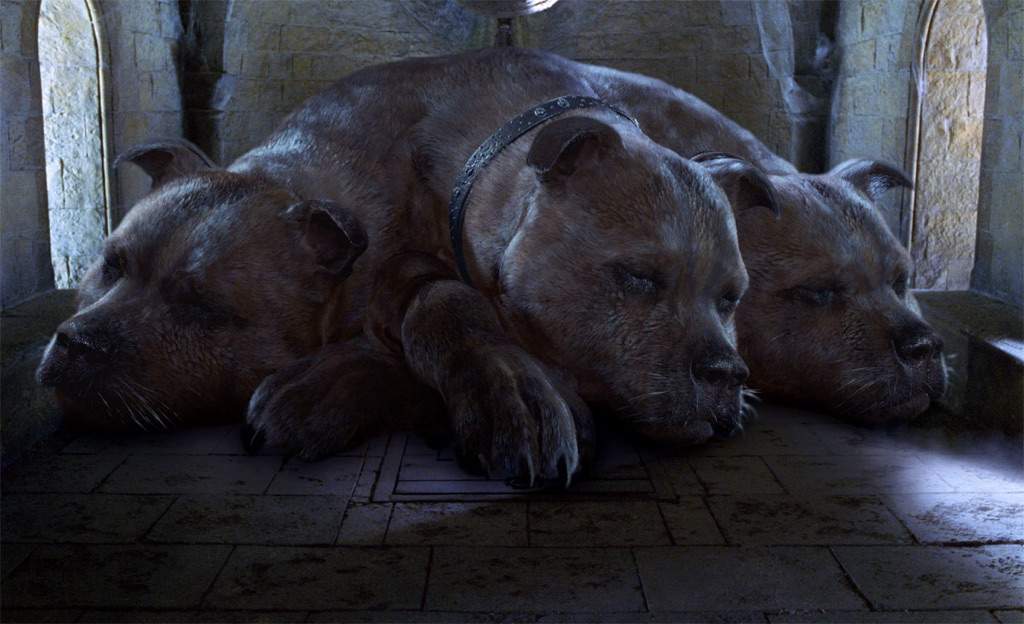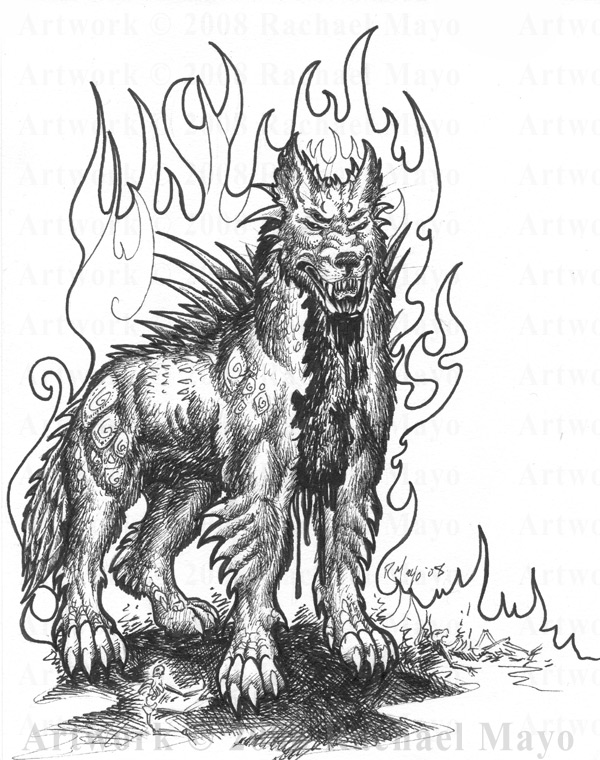Ready? Let's get
started.
The Egyptians
worshiped a deity named Anubis. Anubis has the body of a man and a canine head. The
Egyptians often associated Anubis with graveyards. Although he is
sometimes depicted as escorting dead souls to the afterlife, the
deity's role is primarily that of a gatekeeper and judge. The
Egyptian afterlife, ruled over by Osiris, is guarded by Anubis. To
enter into the afterlife, a person's heart was placed on a scale
opposite the feather of truth.
If the scales balanced out, or the
heart was lighter, Anubis judged them worthy and allowed them into
the afterlife. If the heart was heavier, however...well, then the
person was unworthy. They were tossed aside to be devoured by a sort
of hippo-crocodile-lion thing (it's as unpleasant as it sounds).
Let's change
cultures, shall we?
Perhaps the best
known Hound of Hel is the Greek Cerberus. Frequently depicted with
three heads (though sometimes with only two), Cerberus is the
fearsome hound who guards the entrance to the Greek afterlife. His
master is Hades.
Cerberus prevents the living from entering or
exiting the underworld, but there are a few times where he has failed
in this task. Hercules himself bested Cerberus, and was therefore
allowed to leave the underworld. Music is as effective on the hound
as brawn, however. The great poet Orpheus was able to enter the
underworld in search of his dead wife by playing his harp, lulling
Cerberus into letting him pass.
The Romans also
included Cerberus in their myths, one of a few characters whose names
did not change. Roman mythology adds another person to the list of
those who have made it past the guard dog of the underworld: Aeneas.
In this story by Virgil, Cerberus is bested not with strength or with
music, but with treats. Every dog likes a good treat, right? Turns
out a barley cake soaked in mead is the way to this giant puppy's
heart.
So Egyptian, Greek,
and Roman mythologies all have dogs who guard the gates of the
underworld. This could be explained by the proximities of the
cultures to one another. After all, all three mythologies share
quite a few similarities. But the Norse culture is pretty far from
the Mediterranean. Because of this, I find it fascinating that they
have:
Garm is the
guardian of Hel, the Norse underworld for those who did not die a
valiant death. His mistress is Hel herself. Garm is described as a
fearsome hound whose fur is coated in blood. When Ragnarok comes,
Garm will do battle with Tyr, and both will die in battle.
Most interesting to
me is the fact that Garm can be calmed...by being given a piece of
bread. Sounds pretty similar to the Roman take on Cerberus! Dogs
and their treats, right?
What do you guys
think? Know of any other cultures that have dogs connected to the
underworld?




No comments:
Post a Comment